|
|
|
Oxford University Press
|
The first ever 4th edition from the world's most trusted course — New Headway Upper-Intermediate, completely rewritten and packed with new material. |
|
The first ever 4th edition from the world's most trusted course — New Headway Upper-Intermediate, completely rewritten and packed with new material. |
|
The first ever 4th edition from the world's most trusted course — New Headway Upper-Intermediate, completely rewritten and packed with new material. |
|
The first ever 4th edition from the world's most trusted course — New Headway Upper-Intermediate, completely rewritten and packed with new material. |
|
Expanding vital core grammar in exploratory language focus sections, this title includes texts from a variety of sources that aim to provide the rich vocabulary input that learners need at this level. |
|
The first ever 4th edition from the world's most trusted course — New Headway Pre Intermediate, completely rewritten and packed with new material. |
|
The world's best-selling adult English course — a perfectly-balanced syllabus, strong grammar focus, and full support for your upper-intermediate classroom. |
|
The world's best-selling adult English course — a perfectly-balanced syllabus, strong grammar focus, and full support for your upper-intermediate classroom. |
|
The first ever 4th edition from the world's most trusted course — New Headway Pre-Intermediate, completely rewritten and packed with new material. |
|
Taxation is crucial to the functioning of the modern state. Tax revenues pay for public services — roads, the courts, defence, welfare assistance to the poor and elderly, and in many countries much of health care and education too. More than one third of national income in the industrialized (OECD) countries is on average taken in taxation. Taxes affect individuals in many ways. Taxes paid on income and spending directly reduce taxpayer disposable income, taxpayers face the hassle of tax returns and making payments, and they may be anxious about the possibility of investigation and enforcement action. People also adapt their activities in various ways to reduce the impact of taxation — putting money into tax-free savings accounts, or making shopping trips to other countries where taxes are lower. Taxation is therefore central to politics and public debate. Politicians that make reckless campaign promises about taxation then have to live with the uncomfortable consequences if elected. Businesses lobby for tax breaks that they claim will create jobs and prosperity. In this Very Short Introduction Stephen Smith shows how taxes have real effects on citizens and the economy that tax policy-makers have to balance. Although tax policy will always be a highly political issue, he argues that public decisions about taxation would be improved by a better understanding of the role of taxation, and of the nature and effects of different taxes. ABOUT THE SERIES: The Very Short Introductions series from Oxford University Press contains hundreds of titles in almost every subject area. These pocket-sized books are the perfect way to get ahead in a new subject quickly. Our expert authors combine facts, analysis, perspective, new ideas, and enthusiasm to make interesting and challenging topics highly readable. |
|
Assyria was one of the most influential kingdoms of the Ancient Near East. In this Very Short Introduction, Karen Radner sketches the history of Assyria from city state to empire, from the early 2nd millennium BC to the end of the 7th century BC. Since the archaeological rediscovery of Assyria in the mid-19th century, its cities have been excavated extensively in Iraq, Syria, Turkey and Israel, with further sites in Iran, Lebanon, and Jordan providing important information. The Assyrian Empire was one of the most geographically vast, socially diverse, multicultural, and multi-ethnic states of the early first millennium BC.Using archaeological records, Radner provides insights into the lives of the inhabitants of the kingdom, highlighting the diversity of human experiences in the Assyrian Empire. ABOUT THE SERIES: The Very Short Introductions series from Oxford University Press contains hundreds of titles in almost every subject area. These pocket-sized books are the perfect way to get ahead in a new subject quickly. Our expert authors combine facts, analysis, perspective, new ideas, and enthusiasm to make interesting and challenging topics highly readable. |
|
The complex world of Egyptian myth is clearly illuminated in this fascinating new approach to ancient Egypt. Geraldine Pinch explores the cultural and historical background behind a wide variety of sources and objects, from Cleopatra's Needle and Tutankhamun's golden statue, to a story on papyrus of the gods misbehaving. What did they mean, and how have they been interpreted? The reader is taken on an exciting journey through the distant past, and shown how myths of deities such as Isis and Osiris influenced contemporary culture and have become part of our cultural heritage. |
|
Linguistics falls in the gap between arts and science, on the edges of which the most fascinating discoveries and the most important problems are found. Rather than following the conventional organization of many contemporary introductions to the subject, the author of this stimulating guide begins his discussion with the oldest, 'arts' end of the subject and moves chronologically through to the newest research — the 'science' aspects. A series of short thematic chapters look in turn at such areas as the prehistory of languages and their common origins, language and evolution, language in time and space (the nature of change inherent in language), grammars and dictionaries (how systematic is language?), and phonetics. Explication of the newest discoveries pertaining to language in the brain completes the coverage of all major aspects of linguistics from a refreshing and insightful angle. ABOUT THE SERIES: The Very Short Introductions series from Oxford University Press contains hundreds of titles in almost every subject area. These pocket-sized books are the perfect way to get ahead in a new subject quickly. Our expert authors combine facts, analysis, perspective, new ideas, and enthusiasm to make interesting and challenging topics highly readable. |
|
Ludwig Wittgenstein (1889-1951) was an extraordinarily original philospher, whose influence on twentieth-century thinking goes well beyond philosophy itself. In this book, which aims to make Wittgenstein's thought accessible to the general non-specialist reader, A. C. Grayling explains the nature and impact of Wittgenstein's views. He describes both his early and later philosophy, the differences and connections between them, and gives a fresh assessment of Wittgenstein's continuing influence on contemporary thought. |
|
Jack, standing among the war graves, sees a face he recognizes. Suddenly, it's 1914 again and he's a young lad back in the trenches. Visions of killing and misery come to him with horrible clarity. But then Jack remembers too the incredible moment when the guns fell silent for a short time, and fighting gave way to football on the frozen ground of No-Man's-Land. This amazing story, based on true facts from the First World War, will transport readers back to the war fields of France and show that even in times of conflict and extreme sadness, there is always hope. |
|
Drawing on studies of social class, crime and deviance, work in bureaucracies, and changes in religious and political organizations, this Very Short Introduction explores the tension between the individual's role in society and society's role in shaping the individual, and demonstrates the value of sociology as a perspective for understanding the modern world. |
|
In its essence, Critical Theory is Western Marxist thought with the emphasis moved from the liberation of the working class to broader issues of individual agency. Critical Theory emerged in the 1920s from the work of the Frankfurt School, the circle of German-Jewish academics who sought to diagnose — and, if at all possible, cure — the ills of society, particularly fascism and capitalism. In this book, Stephen Eric Bronner provides sketches of famous and less famous representatives of the critical tradition (such as George Lukacs and Ernst Bloch, Theodor Adorno and Walter Benjamin, Herbert Marcuse and Jurgen Habermas) as well as many of its seminal texts and empirical investigations. Though they shared a Marxist bent, the Frankfurt School's scholars came from a variety of fields — philosophy, economics, psychoanalysis, and even music — and they initially sought not only to do interdisciplinary work but also to combine theory with practice, criticism with empirical data. Forced by the rise of Hitler to flee to the United States, by the late 1930s the Frankfurt School left behind the emphasis on empiricism, beginning instead to specialize in philosophical inquiry into the nature of social control, which combined the work of Hegel, Marx, Freud, and Nietzsche. This VSI is ultimately organized around the cluster of concepts and themes that set critical theory apart from its more traditional philosophical competitors. Bronner explains and discusses concepts such as method and agency, alienation and reification, the culture industry and repressive tolerance, non-identity and utopia. He argues for the introduction of new categories and perspectives for illuminating the obstacles to progressive change and focusing upon hidden transformative possibilities. Only a critique of critical theory can render it salient for a new age. That is precisely what this very short introduction seeks to provide. |
|
The 1960s revealed a new and revolutionary idea in geological thought: that the continents drift with respect to one another. After having been dismissed for decades as absurd, the concept gradually became part of geology's basic principles. We now know that the Earth's crust and upper mantle consist of a small number of rigid plates that move, and there are significant boundaries between pairs of plates, usually known as earthquake belts. Plate tectonics now explains much of the structure and phenomena we see today: how oceans form, widen, and disappear; why earthquakes and volcanoes are found in distinct zones which follow plate boundaries; how the great mountain ranges of the world were built. The impact of plate tectonics is studied closely as these processes continue: the Himalaya continues to grow, the Atlantic is widening, and new oceans are forming. In this Very Short Introduction Peter Molnar provides a succinct and authoritative account of the nature and mechanisms of plate tectonics and its impact on our understanding of Earth. ABOUT THE SERIES: The Very Short Introductions series from Oxford University Press contains hundreds of titles in almost every subject area. These pocket-sized books are the perfect way to get ahead in a new subject quickly. Our expert authors combine facts, analysis, perspective, new ideas, and enthusiasm to make interesting and challenging topics highly readable. |
|
The sixteenth and seventeenth centuries witnessed such fervent investigations of the natural world that the period has been called the Scientific Revolution. New ideas and discoveries not only redefined what human beings believed, knew, and could do, but also forced them to redefine themselves with respect to the strange new worlds revealed by ships and scalpels, telescopes and microscopes, experimentation and contemplation. Driven by religious devotion, by practical need, by the promise of fame and profit, or by the simple desire to know, a broad range of thinkers and workers explored and reconceptualized the world around them. Explanatory systems were made, discarded, and remade by some of the best-known names in the entire history of science — Copernicus, Galileo, Newton — and by many others less recognized but no less important. In this Very Short Introduction Lawrence M. Principe explores the exciting developments in the sciences of the stars (astronomy, astrology, and cosmology), the sciences of earth (geography, geology, hydraulics, pneumatics), the sciences of matter and motion (alchemy, chemistry, kinematics, physics), the sciences of life (medicine, anatomy, biology, zoology), and much more. The story is told from the perspective of the historical characters themselves, emphasizing their background, context, reasoning, and motivations, and dispelling well-worn myths about the history of science. |
|
A vast subject that includes a strange vocabulary and an apparent mass of facts, human anatomy can at first appear confusing and off-putting. But the basic construction of the human body — the skeleton, the organs of the chest and abdomen, the nervous system, the head and neck with its sensory systems and anatomy for breathing and swallowing — is vital for anyone studying medicine, biology, and health studies. In this Very Short Introduction Leslie Klenerman provides a clear, concise, and accessible introduction to the structure, function, and main systems of the human body, including a number of clear and simple illustrations to explain the key areas. ABOUT THE SERIES: The Very Short Introductions series from Oxford University Press contains hundreds of titles in almost every subject area. These pocket-sized books are the perfect way to get ahead in a new subject quickly. Our expert authors combine facts, analysis, perspective, new ideas, and enthusiasm to make interesting and challenging topics highly readable. |
|